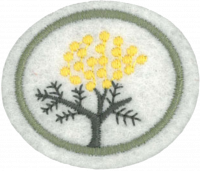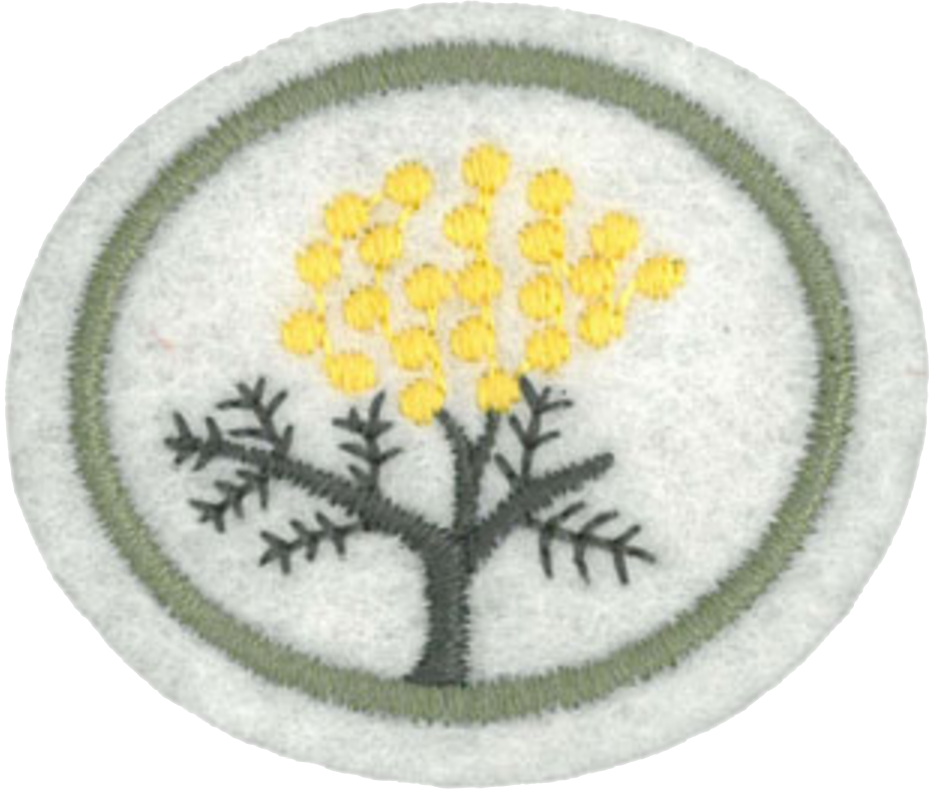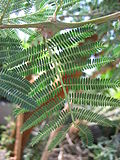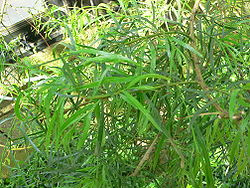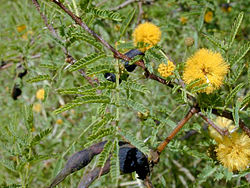Difference between revisions of "AY Honors/Wattles/Answer Key/pt-br"
(Created page with "{{clear}}") |
(Created page with "{{clear}}") |
||
| Line 133: | Line 133: | ||
{{clear}} | {{clear}} | ||
| − | + | {{clear}} | |
| − | |||
| − | |||
| − | |||
<div lang="en" dir="ltr" class="mw-content-ltr"> | <div lang="en" dir="ltr" class="mw-content-ltr"> | ||
Revision as of 13:29, 12 August 2021
1
2
3
Acacia leaves come in two major forms: bipinnate, and phyllodes.
Pinnate leaves are compound, consisting of leaflets. The word pinnate comes from the Latin word pinna for "feather". In fact, the word pen shares this origin, as the first ink pens were made from feathers. In bipinnnate leaves, the leaflets have leaflets of their own, as in the top image to the right.
4
Some species of acacia are difficult to tell apart. They may be identical in every other outward appearance, but have starkly (or subtly) different seed pods. For example Acacia farnesiana and Acacia pulchella look very much alike, but the seed pods are different.
5
There are three subgenera of Acacias that retain bipinnate leaves when fully grown, namely Botrycephalae, Pulchellae, and Aculeiferum.
6
The first leaves to emerge from an acacia sprout are true leaves. In plants that will develop phyllodes, the true leaves persist until the plant is about a meter tall.
7
Before an acacia seed can germinate, the seed coat must be cracked. This can happen by any of several methods, but fire is the most common. People who grow wattles can crack the seed coats themselves using a three-cornered file. Seed coats can also be cracked by being run over by heavy machinery during construction projects, or by other physical stresses.
8
The phyllodes of the Acacia cyanophylla (Blue Leaf Wattle) have been used to feed sheep during times of drought.
9
The bark of various Australian species, known as wattles, is very rich in tannin and forms an important article of export; important species include Acacia pycnantha (Golden Wattle), Acacia decurrens (Tan Wattle), Acacia dealbata (Silver Wattle) and Acacia mearnsii (Black Wattle).
10
Most acacia species are used for valuable timber; such are Acacia melanoxylon (Blackwood) from Australia, which attains a great size; its wood is used for furniture, and takes a high polish; and Acacia omalophylla (Myall Wood, also Australian), which yields a fragrant timber, used for ornamental purposes.
11
Food uses
Acacia seeds are often used for food and a variety of other products.
Ornamental uses
A few species are widely grown as ornamentals in gardens; the most popular perhaps is Acacia dealbata (Silver Wattle), with its attractive glaucous to silvery leaves and bright yellow flowers; it is erroneously known as "mimosa" in some areas where it is cultivated, through confusion with the related genus Mimosa.
Another ornamental acacia is Acacia xanthophloea (Fever Tree). Southern European florists use Acacia baileyana, Acacia dealbata, Acacia pycnantha and Acacia retinodes as cut flowers and the common name there for them is mimosa.
Ornamental species of acacia are also used by homeowners and landscape architects for home security purposes. The sharp thorns of some species deter unauthorized persons from entering private properties, and may prevent break-ins if planted under windows and near drainpipes. The aesthetic characteristics of acacia plants, in conjunction with their home security qualities, makes them a considerable alternative to artificial fences and walls.
Paints
The ancient Egyptians used Acacia in paints.
Perfume
Acacia farnesiana is used in the perfume industry due to its strong fragrance. The use of Acacia as a fragrance dates back centuries. In The Bible, burning of acacia wood as a form of incense is mentioned several times.
Other Uses
Acacia is also used for lumber and as a source of tannin, but these qualities are discussed elsewhere in this chapter, so we will only mention them here.
12
20 fotografias onde possas mostrar os detalhes acima referidos.
The best approach to this requirement is to go out into the field and find some wattles - then identify them. There are numerous books and CDRoms available for purchase that will help in identifying the various species. There are also a few dichotomous keys online, such as this one which are free (though not necessarily easy to use).
